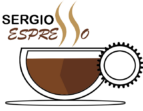Designing a Membership Program for a Non-Profit: A Framework Approach
Introduction
This blog post delves into the world of product management interviews at top tech companies,
specifically focusing on the “FAANG” group. We’ll explore the importance of using frameworks to
structure your responses, showcasing your analytical and strategic thinking skills. As an example,
we’ll examine how to design a membership program for a non-profit organization, leveraging
strategies from the acclaimed book “Decode and Conquer: Answers to Product Management Interviews.”
Detailed Guide on Framework Application
To tackle our interview question effectively, we’ll employ the CIRCLES Method™, a framework
developed by Lewis C. Lin. This method provides a structured approach for tackling product design
questions. Here’s a step-by-step guide on applying this framework to our non-profit membership
program design:
-
Comprehend the Situation: Begin by clarifying the objectives and constraints of
the non-profit organization. Determine their mission, target audience, and what they aim to
achieve with a membership program. -
Identify the Customer: Understand who the potential members are. Consider
creating personas to represent different member segments, such as donors, volunteers, and
beneficiaries. -
Report the Customer’s Needs: List out the needs and motivations of each persona
that the membership program can address. -
Cut through Prioritization: Prioritize the features that will offer the most
value to members and support the non-profit’s goals. -
List Solutions: Outline a set of features and benefits for the membership program
that align with the prioritized needs. -
Explain Your Reasoning: Justify your choices by explaining how each feature
supports the non-profit’s mission and provides value to the members. -
Summarize Your Answer: Conclude by summarizing the key components of your
proposed membership program.
Let’s apply these steps to a hypothetical non-profit dedicated to environmental conservation.
By comprehending the situation, we learn that our non-profit aims to increase engagement and
secure funding. Identifying the customer leads us to three key personas: environmentally-conscious
citizens, young activists, and seasoned philanthropists. Reporting their needs, we note that
these personas are looking for ways to make a tangible impact, access to exclusive information
and events, and networking opportunities.
Prioritization might lead us to focus first on features like specialized content, interactive
webinars, and member-only events. Listing solutions, we propose a tiered membership structure
with newsletters, a resource library, community forums, and early access to events and
initiatives. When explaining our reasoning, we emphasize the alignment of these features with
our philanthropic goals and member expectations. Finally, we summarize our membership program as
a comprehensive, value-rich offering designed to engage and empower our community.
Conclusion
To answer a product management interview question effectively, it’s crucial to use a
structured framework like the CIRCLES Method™. This provides clarity and demonstrates your
ability to think methodically about product design. The key takeaways from our examination of
the non-profit membership program design are understanding the organization’s needs,
identifying and segmenting the customer base, and creating a compelling, prioritized list of
features. We encourage all aspiring PMs to practice this approach in preparation for their
interviews.
